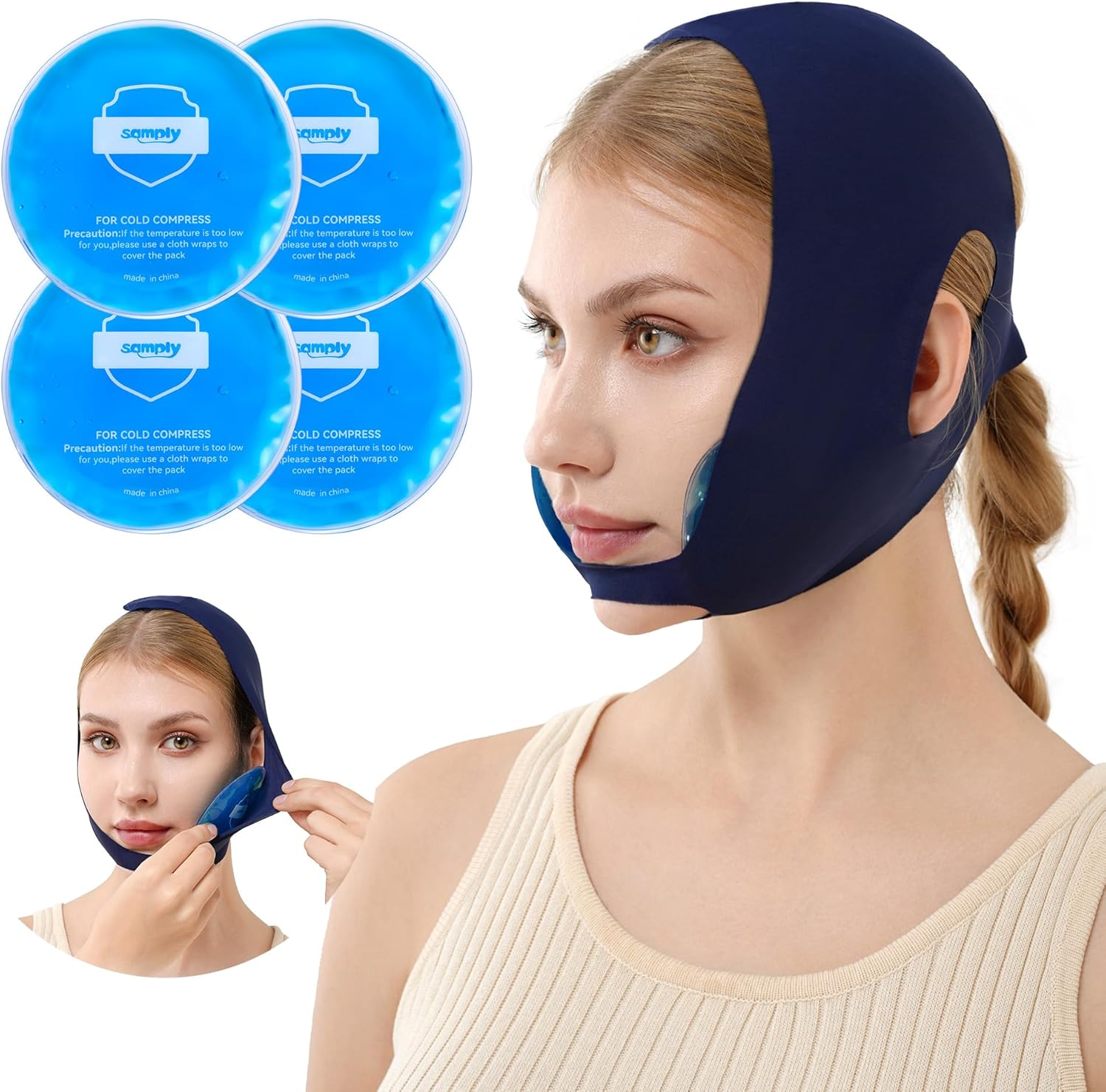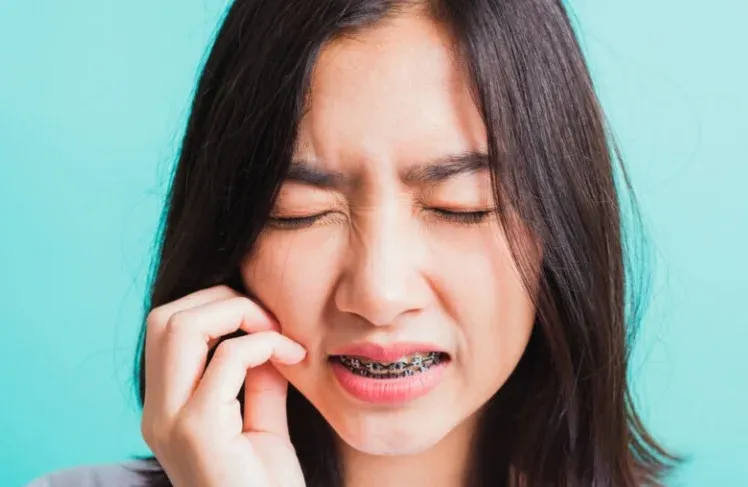My Braces Hurt so Bad i Want to Cry: 1O Tips To Relieve Pain
“`html Disclosure: This post contains affiliate links. If you buy through these links, I may earn…
“`html
My Braces Hurt So Bad I Want to Cry: 10 Immediate Tips for Relief
It’s 2 AM. You’re lying in bed, clutching your jaw. The pressure is unbearable, and you find yourself thinking,
“My braces hurt so bad I want to cry.”
If this is you right now, listen closely: You are not being dramatic. The pain is real. The frustration is valid.
And yes, it is completely normal to shed a few tears during the first week of orthodontic treatment.
Whether you just got your new braces or had them tightened, the discomfort can feel overwhelming—physically and emotionally.
But here is the truth: this pain often means the treatment is working.
In this guide, we combine practical dental tips with real-world “survival” strategies. You’ll learn why braces hurt so much,
how to handle the emotional toll, and the fastest ways to find relief—plus a simple “Braces Survival Kit” that can help you get through tonight.
Why Do Braces Hurt So Much? (The Science Behind the Pain)
Understanding what’s happening can make the pain easier to handle. Braces work by applying continuous pressure to your teeth.
That pressure compresses the periodontal ligament (the “cushion” holding each tooth in the jawbone).
Bone remodeling: Your body responds by dissolving bone on one side of the tooth and rebuilding it on the other.
This biological process causes inflammation, which feels like a deep, dull ache—especially in the first few days after getting braces
or after tightening appointments.
So when you feel pain from braces, it’s often a sign your smile is under construction. The bad news is it can feel intense for a few days.
The good news: for most people, it’s temporary and becomes much more manageable once the mouth adapts.
The “Braces Survival Kit”: Essential Products for Relief
When home remedies aren’t enough, having the right tools nearby can help you calm irritation, reduce soreness, and sleep better.
Below are the most useful categories for the first week with braces (and after adjustments).

1) For Cuts & Rubbing: Orthodontic Wax (Must-Have)
If a bracket or wire is digging into your cheek or lip, wax is the fastest “barrier” fix.
Apply a small ball over the rough spot to reduce friction and give sores a chance to heal.

2) For Jaw Soreness & Swelling: Hands-Free Ice Pack Wrap
Cold therapy can calm inflammation and numb soreness. A hands-free wrap is especially helpful at night
when you want relief without holding an ice pack in place.

3) For Gentle Cleaning: Extra-Soft Toothbrush (Braces-Friendly)
Sore gums + braces can make brushing feel harsh. An extra-soft brush helps you stay clean without “scrubbing through” the tenderness—
especially during the first week and after adjustments.

4) For Fresh Breath Support: Alcohol-Free Oral Rinse
Braces can trap food in hard-to-reach areas. A gentle rinse can help freshen breath and support overall comfort,
especially if you’re prone to tonsil stones or persistent odor.

5) For “I Can’t Chew”: Meal Replacement Shake Mix
If your teeth feel too tender to chew, a smooth shake can help you keep calories and protein up without biting.
This is a lifesaver during the first few days.
10 Tips to Relieve Braces Pain (Home & Professional)
If your braces hurt so bad, try these strategies to manage the discomfort effectively. You don’t need to do all of them—
but combining a few usually makes a noticeable difference.
1) Use Orthodontic Wax Like a Pro
Don’t wait for a cut to form. If a bracket feels rough, dry it with a tissue and press wax over it.
This reduces rubbing on cheeks and gums and can provide near-instant comfort.
Tip: Can you sleep with wax on your braces? Yes—many people do. It protects your mouth while you rest.
(If you need a solid option, the Zeefpod wax in the Survival Kit above is designed for this exact purpose.)
2) Cold Therapy (Ice Is Your Friend)
Sip ice water or eat a popsicle (don’t chew it). Cold can temporarily numb nerve endings and calm inflammation.
Applying a cold compress to the outside of your cheeks can also help.
A wrap-style ice pack can be especially helpful because it stays in place while you rest.
(The samply face wrap in the Survival Kit is a hands-free option you can use while scrolling, reading, or lying down.)
3) Salt Water Rinses
Mix a teaspoon of salt in warm water and swish gently. This can soothe sore spots, support healing, and keep bacteria under control.
It’s simple, cheap, and surprisingly effective.
4) Over-the-Counter Pain Relief (Use Responsibly)
Many people use over-the-counter pain relief during the first 3–5 days after getting braces or tightening.
Options like ibuprofen or acetaminophen are commonly used, but always follow label instructions and ask your orthodontist or doctor if you’re unsure.
5) Massage Your Gums (Gently)
Lightly massaging your gums with a clean finger can stimulate blood flow and reduce the “itchy ache” sensation some people feel
as teeth begin to shift. If it hurts, stop—this should be gentle, not aggressive.
6) Switch to Soft Foods (Temporarily)
Chewing hard foods right now will make everything worse. Give your teeth a break for a few days.
Think: yogurt, mashed potatoes, scrambled eggs, soup, and smoothies.
If chewing is truly unbearable, a smooth meal replacement shake can help you get calories without biting.
(The Pro-Cal powder linked above is made specifically for mixing into shakes or pudding.)
7) Avoid the “Worst Offenders”
Crunchy chips, nuts, hard crusts, sticky candy, and gum can increase soreness or break a bracket—leading to more discomfort and more appointments.
When in doubt, cut food into small pieces and chew with back teeth slowly.
8) Keep Brushing—But Make It Gentle
Skipping brushing can increase inflammation and bad breath, which can make the whole experience feel worse.
Brush slowly with a gentle technique.
An extra-soft toothbrush can make this much easier during tender days.
(The QIANTAIYING 6-pack in the Survival Kit is designed for sensitive teeth and gum care.)
9) Nighttime Routine: Set Yourself Up to Sleep
Pain often spikes at night when distractions fade. Try this routine:
- Elevate your head with an extra pillow to reduce throbbing.
- Wax up any rough spots before bed to prevent waking up with a cut cheek.
- Cold therapy for 15–20 minutes before sleep can make falling asleep easier.
10) Know When to Call Your Orthodontist
Call if you have severe sharp pain, a wire that’s poking and cutting tissue, a loose bracket, or swelling that seems unusual.
Your orthodontist can trim a wire, reposition something, or recommend targeted solutions.
My Braces Hurt So Bad I Can’t Eat: The Soft Food Menu
Chewing hard food right now will only make the pain worse. Give your jaw a vacation by sticking to a “No-Chew Diet” for a few days.
What to Eat:
- Smoothies: Packed with nutrition and requires zero chewing.
- Mashed potatoes & gravy: Comfort food that slides down easily.
- Scrambled eggs: Soft protein.
- Yogurt & pudding: Cool and soothing for inflamed gums.
What to avoid: Crunchy chips, nuts, and sticky candy are off-limits. Biting them can increase soreness or break a bracket.

If chewing is too painful, a smooth meal replacement shake can help you stay fueled during the first few days.
View Pro-Cal Shake Mix
My Braces Hurt So Bad I Can’t Sleep: Nighttime Strategy
Pain often spikes at night when distractions fade. If braces hurt so bad you can’t sleep, try this routine:
- Elevate your head: Sleep with an extra pillow to reduce throbbing.
- Wax up: Cover any pokey parts before bed so you don’t wake up with a sore.
- Time your pain relief: If you’re using an OTC pain reliever, consider taking it (as directed) ~30 minutes before bed.
- Cold therapy: Use a cold wrap for 15–20 minutes as you wind down.

A wrap-style ice pack stays in place so you can relax without holding anything—especially helpful at night.
View samply Ice Wrap
Quick Reminder: Your Braces Pain Relief Kit
If you’re in the rough first week (or right after tightening), these are the most useful “comfort basics” to consider:
- Orthodontic Wax for rubbing & cuts:
Zeefpod Orthodontic Wax - Extra-Soft Toothbrush for gentle cleaning:
QIANTAIYING 6-Pack - Hands-Free Ice Wrap for jaw soreness:
samply Ice Pack Wrap - Alcohol-Free Oral Rinse for fresh breath support:
Tonsil Stone Remover Oral Rinse (300ml) - Meal Replacement Powder for days you can’t chew:
Pro-Cal Strawberry Meal Replacement
You don’t need everything at once. Start with what matches your biggest problem right now: rubbing (wax), soreness (ice),
brushing pain (extra-soft brush), breath issues (rinse), or difficulty eating (shake).







